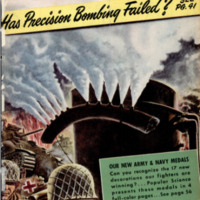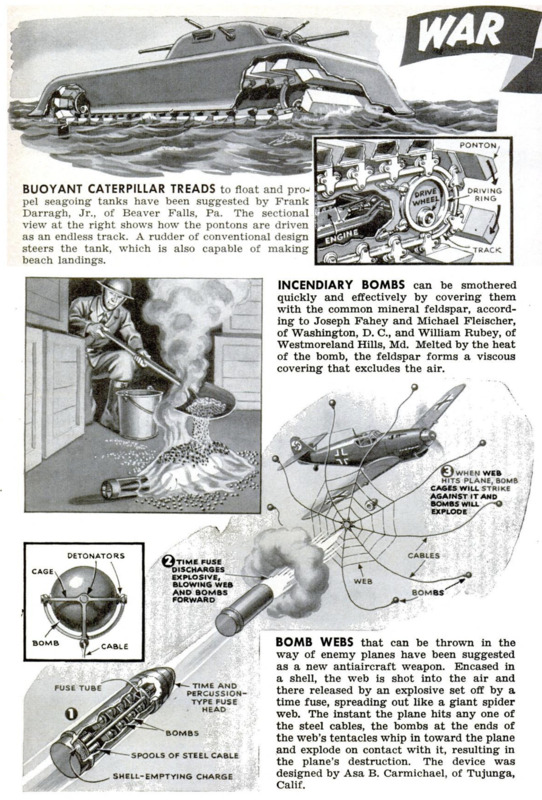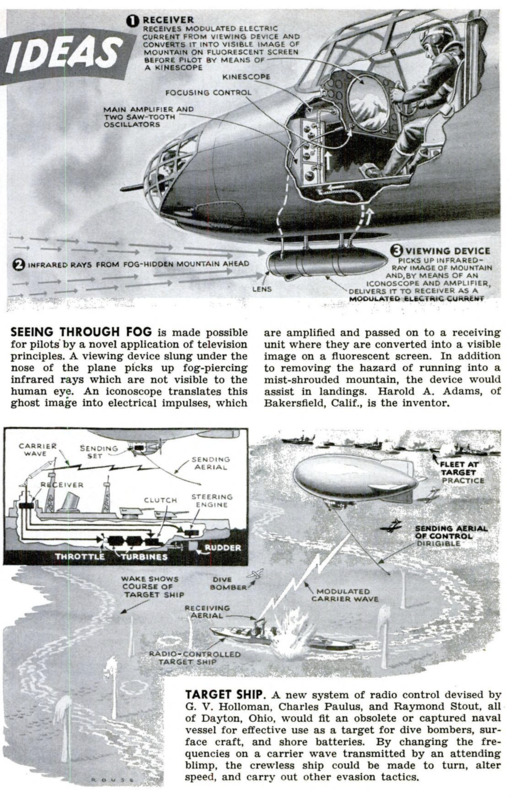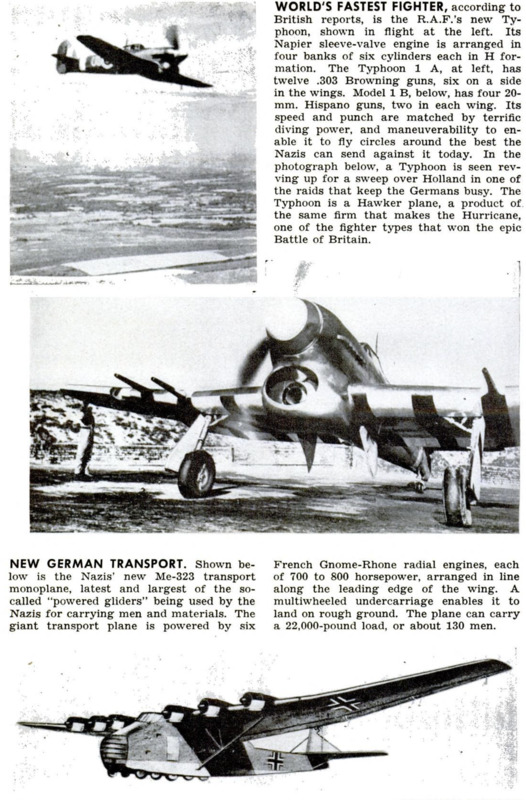War Ideas
Item
-
Title (Dublin Core)
-
War Ideas
-
Article Title and/or Image Caption (Dublin Core)
-
War Ideas
-
extracted text (Extract Text)
-
BUOYANT CATERPILLAR TREADS to float and pro-
pel seagoing tanks have been suggested by Frank
Darragh, Jr. of Beaver Falls, Pa. The sectional
view at the right shows how the pontons are driven
as an endless track. A rudder of conventional design
steers the tank, which is also capable of making
beach landings.
INCENDIARY BOMBS can be smothered
quickly and effectively by covering them
with the common mineral feldspar, accord-
ing to Joseph Fahey and Michael Fleischer,
of Washington, D. C., and William Rubey, of
Westmoreland Hills, Md. Melted by the heat
of the bomb, the feldspar forms a viscous
covering that excludes the air.
BOMB WEBS that can be thrown in the
way of enemy planes have been suggested
as a new antiaircraft weapon. Encased in
a shell, the web is shot into the air and
there released by an explosive set off by a
time fuse, spreading out like a giant spider
web. The instant the plane hits any one of
the steel cables, the bombs at the ends of
the web's tentacles whip in toward the plane
and explode on contact with it, resulting in
the plane's destruction. The device was
designed by Asa B. Carmichael, of Tujunga,
Calif.
SEEING THROUGH FOG is made possible
for pilots by a novel application of television
principles. A viewing device slung under the
nose of the plane picks up fog-piercing
infrared rays which are not visible to the
human eye. An iconoscope translates this
ghost image into electrical impulses, which
are amplified and passed on to a receiving |
unit where they are converted into a visible
image on a fluorescent screen. In addition |
to removing the hazard of running into a
mist-shrouded mountain, the device would |
assist in landings. Harold A. Adams, of |
Bakersfield, Calif., is the inventor.
TARGET SHIP. A new system of radio control devised by |
G. V. Holloman, Charles Paulus, and Raymond Stout, all
of Dayton, Ohio, would fit an obsolete or captured naval
vessel for effective use as a target for dive bombers, sur-
face craft, and shore batteries. By changing the fre- |
quencies on a carrier wave transmitted by an attending |
blimp, the crewless ship could be made to turn, alter |
speed, and carry out other evasion tactics. |
-
Language (Dublin Core)
-
eng
-
Date Issued (Dublin Core)
-
1943-07
-
pages (Bibliographic Ontology)
-
92-94
-
Rights (Dublin Core)
-
Public Domain (Google digitized)
-
Archived by (Dublin Core)
-
Matteo Ridolfi
-
Alberto Bordignon (Supervisor)
 Popular Science Monthly, v. 143, n. 1, 1943
Popular Science Monthly, v. 143, n. 1, 1943






